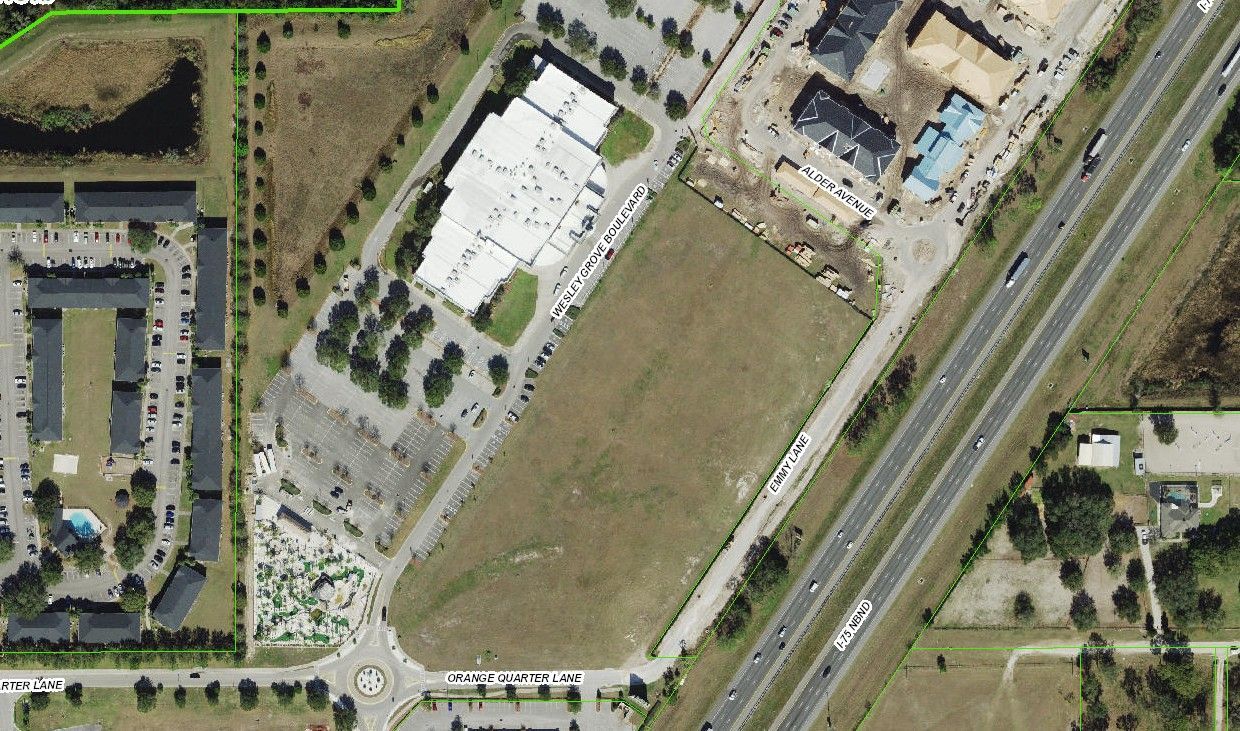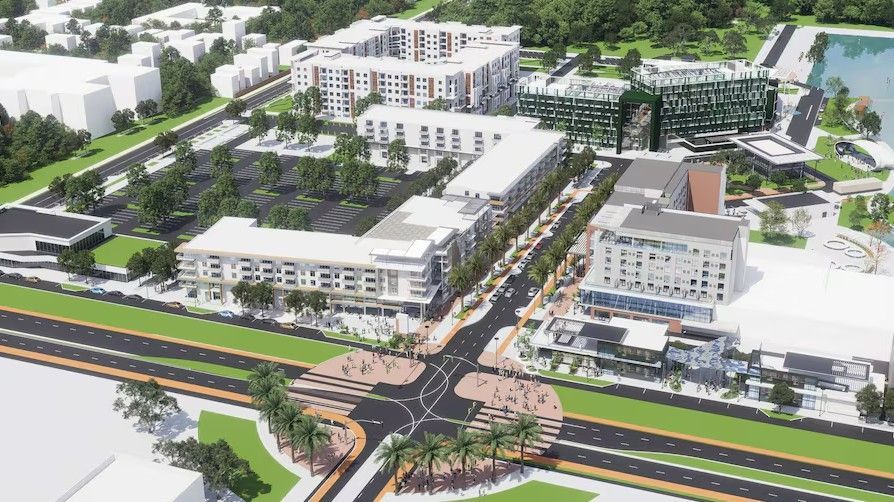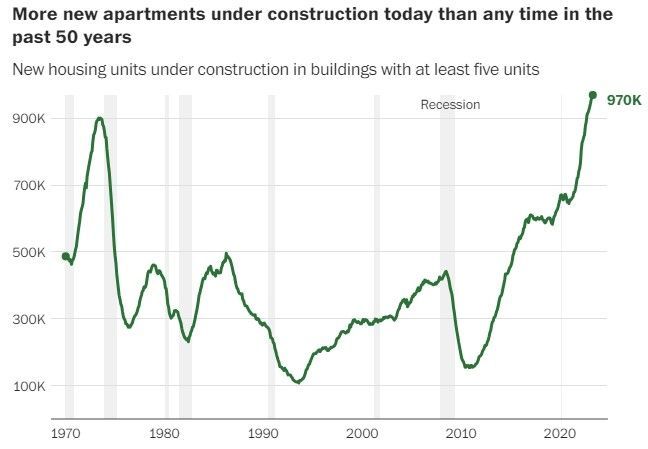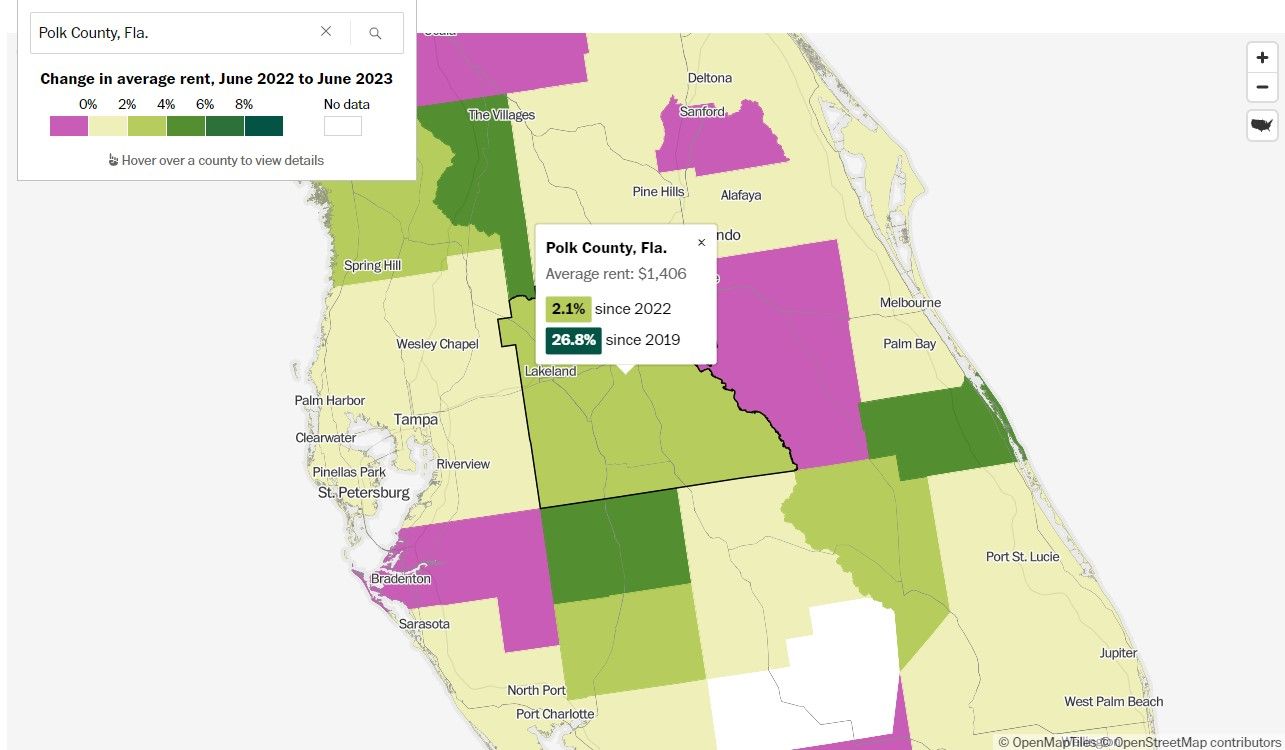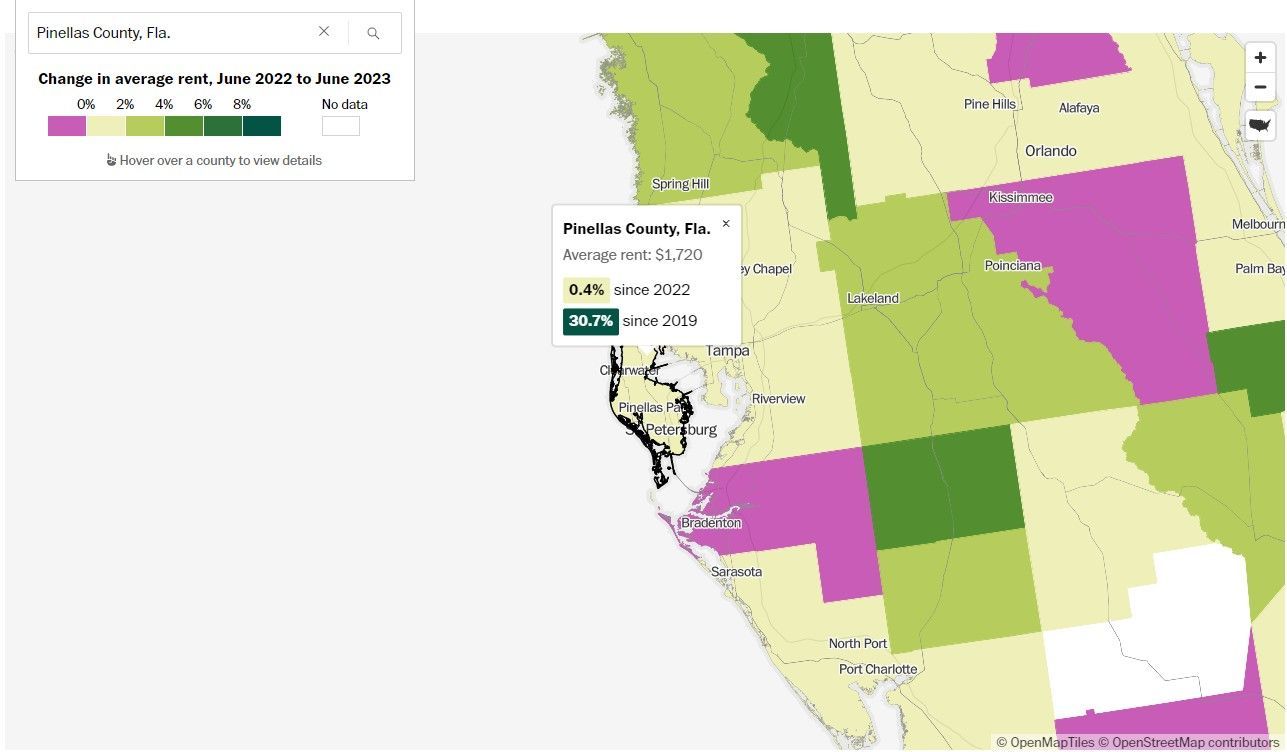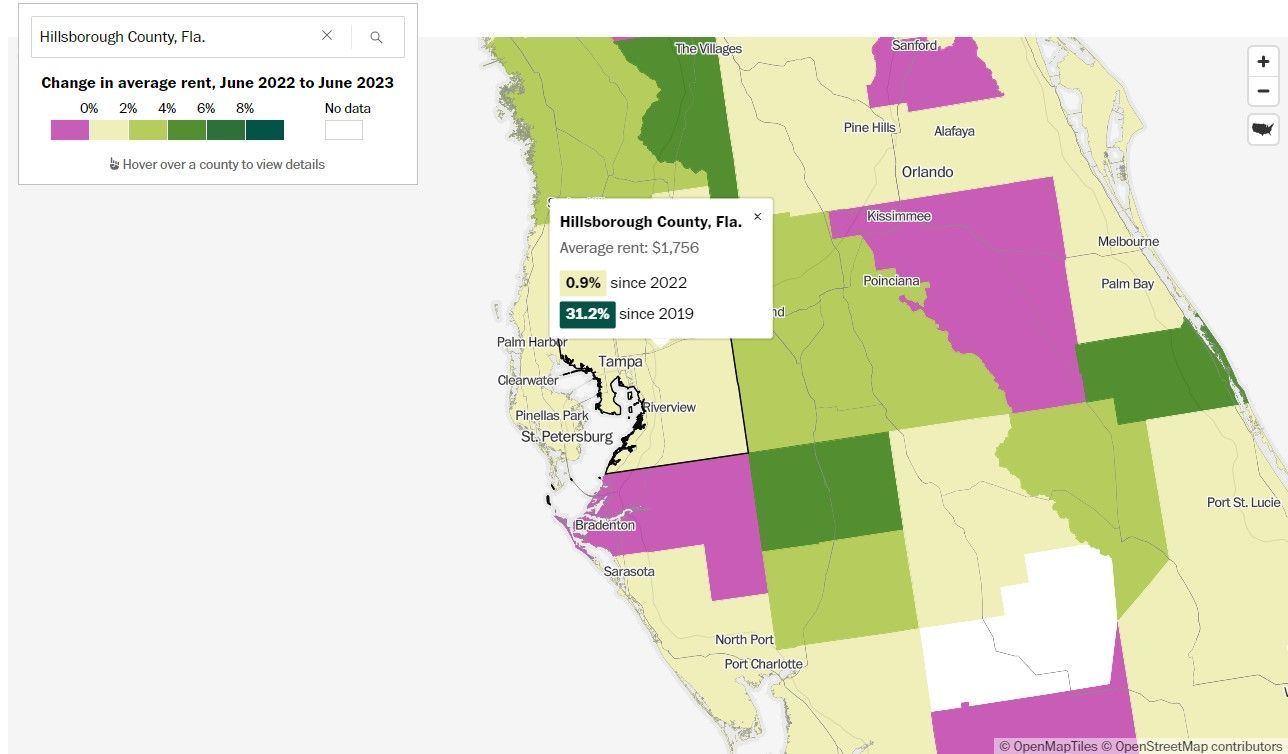National Trends Point to a Decline of Skyrocketing Rents
Nationally, monthly asking prices for rent shot up 15% between 2020 and 2022, the fastest uptick in rents in nearly a century. But good news for renters – costs are calming down. Around the country rent growth is returning to pre-pandemic norms, growing about 1 to 3 percent per year, according to CoStar Data analyzed by The Washington Post.
Year-over-year asking prices for rents rose 1.1% as of June 30th, down 2.8% in March according to the data. More housing is becoming available around the country, with an all-time high of nearly 1 million new apartment units under construction. 520,000 of these units are expected to hit the market this year, and 460,000 will hit the market in 2024.
Demand for apartments also fell in 2022 going to the weakest level since 2009. Fewer people with roommates are branching out on their own, and young adults are living at home with parents for longer. Retirees who downsized from homeownership to rentals are waiting for the housing market to pick up before relocating. The result of all of this is creating a mismatch of available apartments and potential renters, driving down price growth.
In the Sun Belt (the Sun Belt region includes Alabama, Arizona, Arkansas, Georgia, Louisiana, Mississippi, Nevada, New Mexico, North Carolina, Oklahoma, South Carolina, Tennessee, and Texas), influxes of new residents had developers rushing to cash in on growing rental demands. The sudden influx of mainly white-collar workers leaving urban centers of New York and San Francisco in search of cheaper housing and warmer weather created a sudden rental boom. Consequently, annual rents in Phoenix, Dallas, and Miami grew as much as 16% between 2021 and 2022.
Most new rentals coming onto the market (about 70%) are luxury, created for “transplants” with large budgets. However, the new cooling demand for luxury apartments is causing large price declines in high end apartments, falling 0.2% in the past year, while prices for mid and lower tier properties have risen nearly 3% in the same period. Experts say that rents are still considerably higher than they were in 2019, and unlikely to return to their pre-pandemic levels.
The Tampa Bay area is a hot spot for those looking to relocate – gaining the nickname “transplant”. Those from Orlando, Miami, New York, and Chicago frequently search for homes in the Tampa metro on Zillow according to data collected from the real estate firm. However, Miami remains the top destination for Tampa Bay residents looking to relocate, followed by Sarasota and Lakeland. Remote work, cheaper rents, and home flipping continue to drive people to the Tampa metro area. Home Buyers in the Tampa Bay area have seen the trend of home prices continuously increasing – despite rental rates nationally dropping.
All data considered in this blog includes newly posted rents, not lease renewals, for June of each year from 2019 to 2023. Data for new multi-units under construction is from the Census Bureau. All charts have been compiled by The Washington Post.
Thank you for your interest. If you are in need of Appraisal & Valuation services in the West Central Florida Market, contact:
Mike Cliggitt, MAI, MRICS, CCIM
813.405.1705 | 863.661.1165 - Direct Lines
Sources: The Washington Post | Tampa Bay Business Journal
SHARE CONTENT
